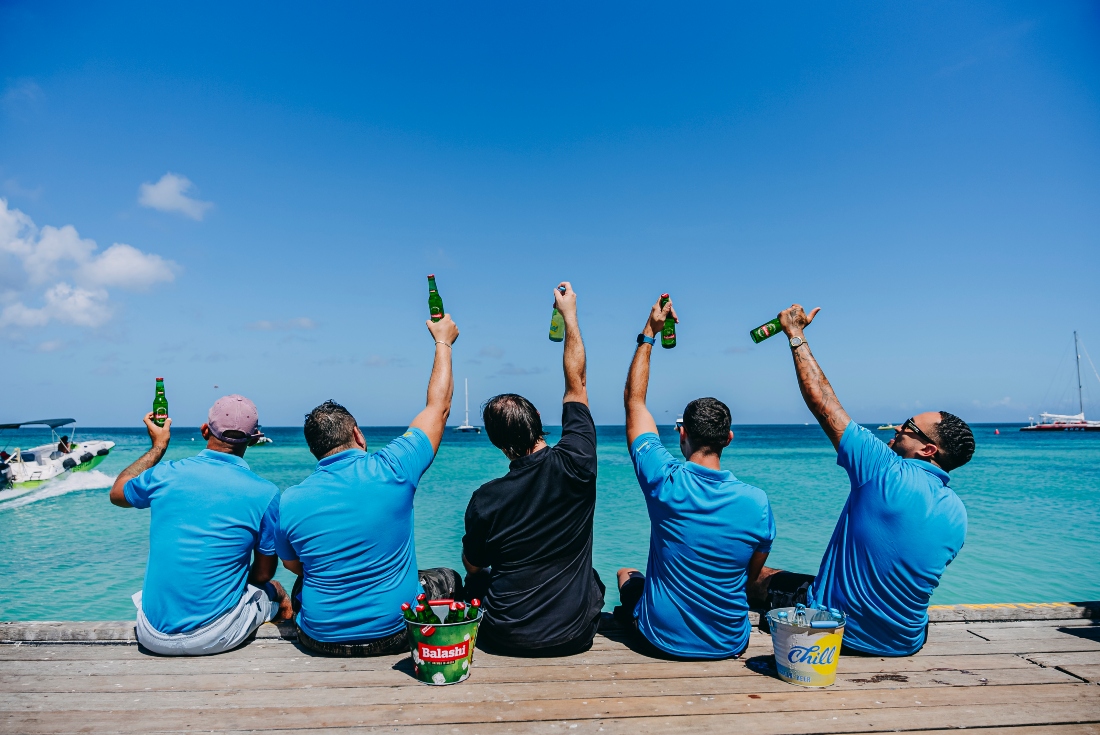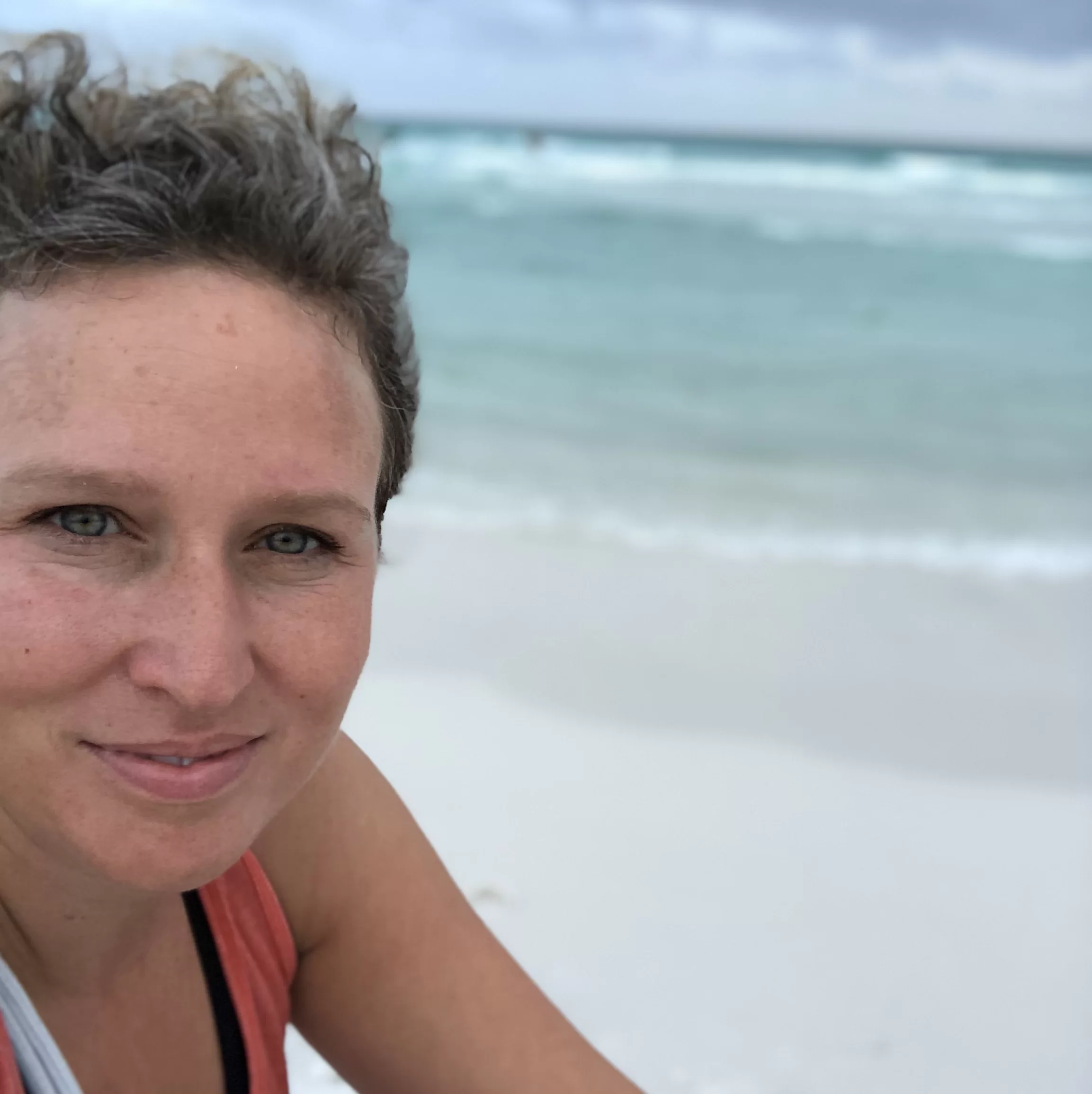Bugaloe Bliss: Aruba’s Iconic Pier Bar Where the Party Meets Paradise
Sip, Sway, and Stay Awhile!
Sip, Sway, and Stay Awhile!
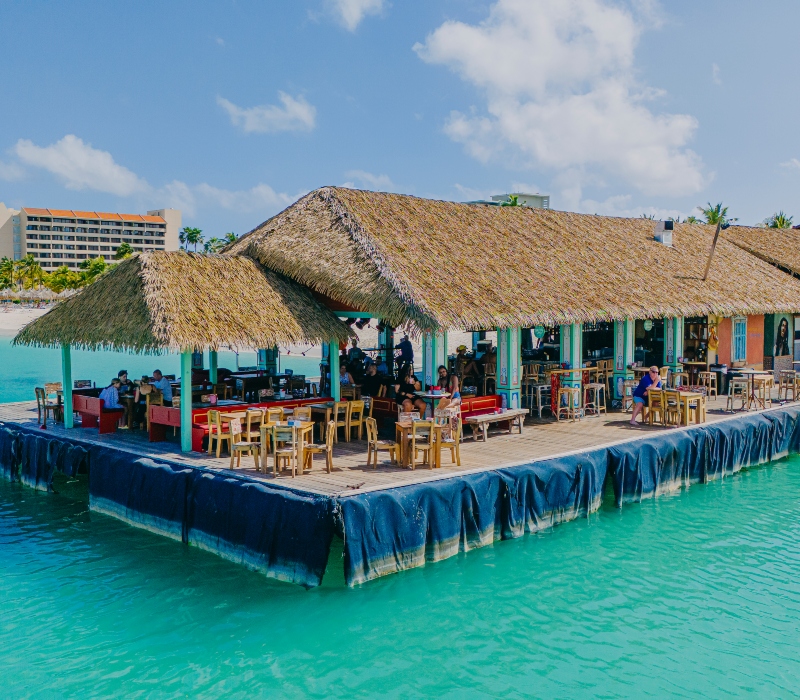
Nestled between two towering high-rise resorts on Aruba’s famous Palm Beach is an unassuming pier jutting into the Caribbean Sea. A venture down its wooden planks uncovers Bugaloe, one of Aruba’s most cherished beach bars.
On a recent visit, I stepped off the sand around noon on a ninety-degree day, walked past the small gift shop and to-go counter, and entered the shaded bar and dining area, struck by a salty, refreshing breeze. Clear, turquoise water stretched as far as the eye could see. From any table or bar stool in the house, the view was spectacular. The vibe was relaxed but playful and fun.
Boats pulled up to dock alongside the bar, letting off small groups of passengers in wet swimsuits and cover-ups. Others came in straight from the beach, where they had been lounging under thatched-roof palapas, taking in the sights and sounds of one of Aruba’s most famous stretches of sand.
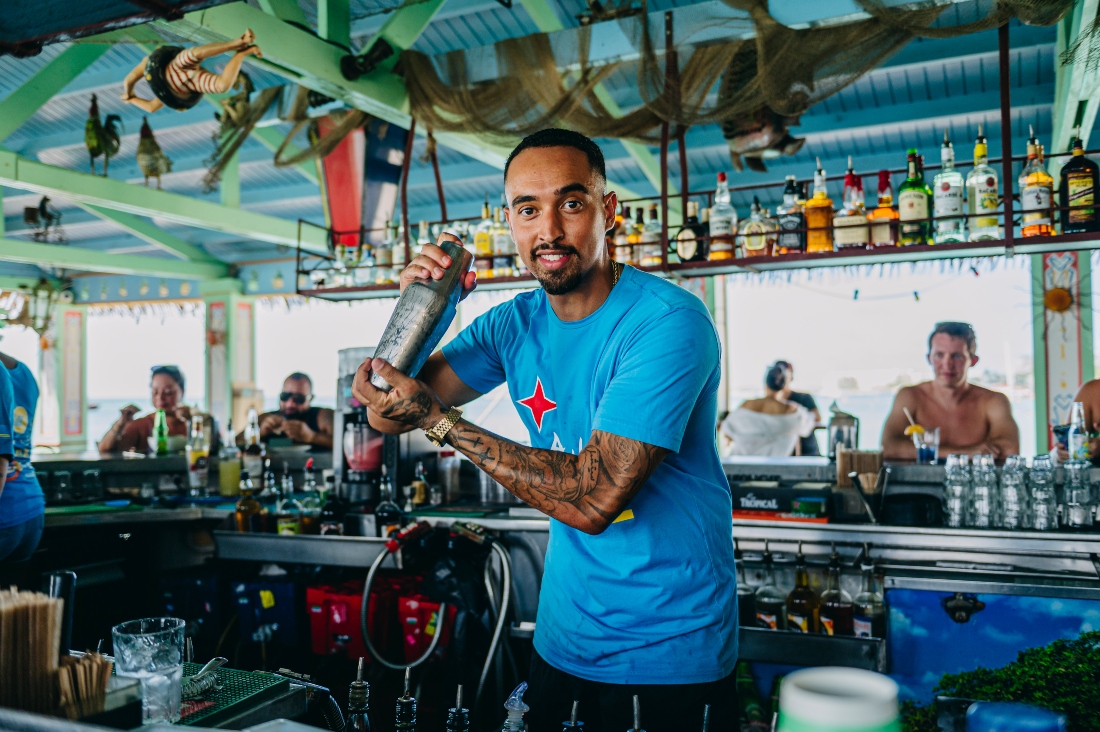
The barstools were full with a mix of locals and visitors, but tables were still available during lunch hour. Family-friendly American hits played over the speakers, loud enough to get your shoulders moving and hips swaying yet quiet enough to allow conversation. A couple arrived and shimmied their way to a table right alongside the water.
Bugaloe’s menu will satiate any beach-goer’s appetite for food and drinks, but it’s the setting and the ambiance that really sets the place apart. “I travel to other countries about three times a year,” Aruban native and Bugaloe’s manager Michael Gomes told me. “Every time I go to a new place, I try to find a bar with the same ambiance as this one, and I just can’t.”
He attributes the unique feel of the place to his crew of servers, bartenders, and back-of-the-house staff. “We’re like a family. Even outside work, we’re always together,” he said. “We ensure our guests feel that energy and become part of the family. You find people that come to the island for thirty years and they don’t know the rest of the island, but they keep coming back to Bugaloe.”
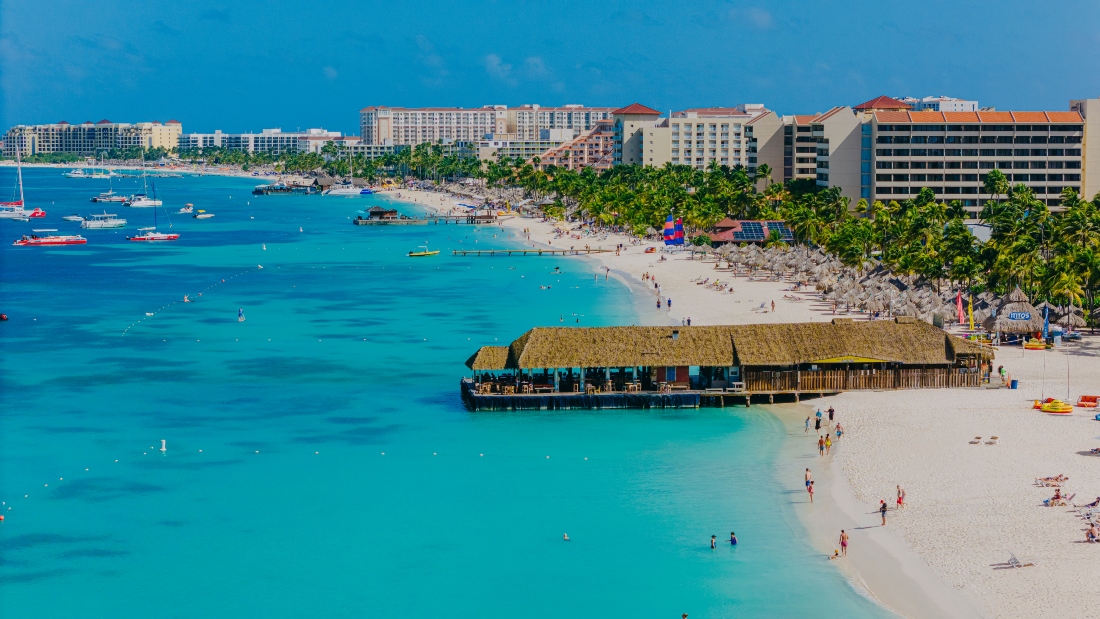
Aruba, a constituent country of the Netherlands, is one of the southernmost Caribbean islands, located just eighteen miles off the northern coast of Venezuela. Many of its just over 100,000 residents speak some combination of four languages: the local dialect, Papiemento, Spanish, Dutch, and English. People from over ninety nations across the world call Aruba home.
It’s known as “one happy island,” and Michael told me it’s not just a loose saying. “People are not nice here because they’ve been taught to be nice. It’s just who we are. It’s just the culture, the way we’ve always been. That’s how we treat one another, and that’s what the people love when they come to visit.”
He said another reason people love to visit Aruba is its safety. It is consistently regarded as one of the safest of the twenty-six countries in the Caribbean. “I’ve never been to a place this safe,” he said. You can walk outside on the beach at one o’clock or two o’clock in the morning with no problem.”
The entire island is about six miles wide and twenty miles long. It’s easy to explore from tip to tip by car, and visitors most definitely should. In addition to the soft, sandy beaches, the island features arid plains covered with thick patches of prickly cacti, large rock formations, and the unique divi-divi and fofoti trees, which have been beautifully shaped and curved by the island’s strong trade winds.
September is the quietest month on the island. “School starts again, and everybody has spent all their summer vacation money,” Michael said. And the busiest? “Every other month.”
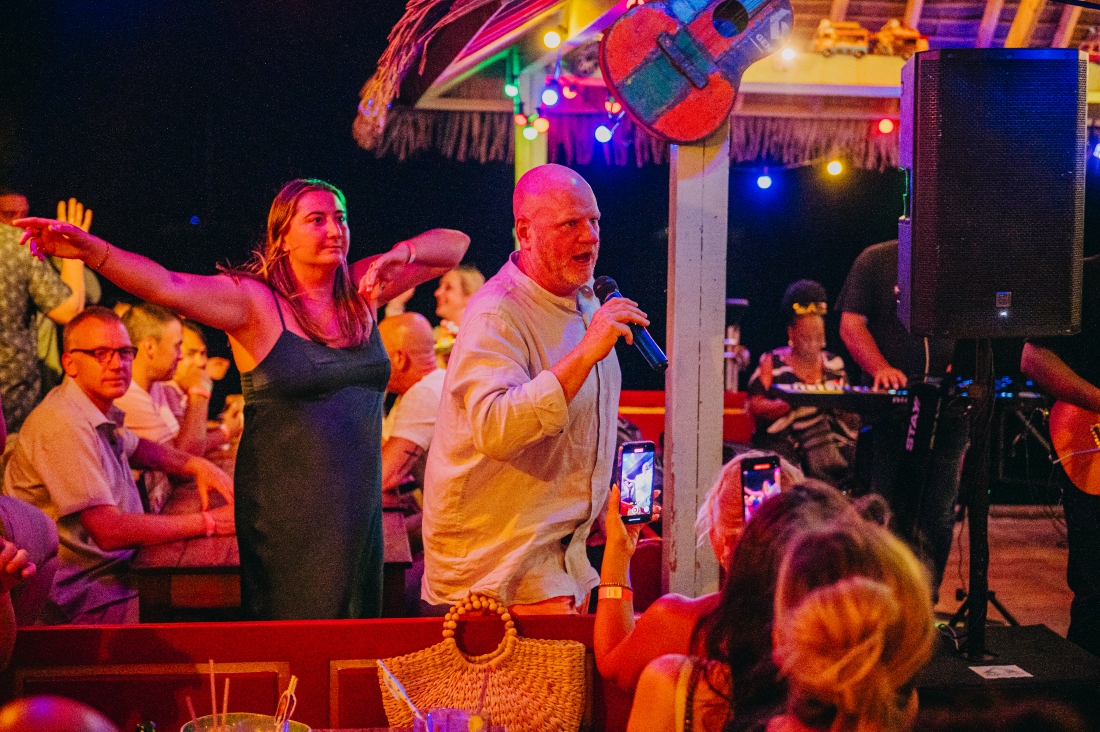
After the sun tips from its highest point in the sky, Bugaloe’s servers and bartenders scurry around, moving tables out to the unshaded outer portion of the bar, creating more waterside seating and opening up the bar area to something that looks like a dance floor. One server pauses to dance with my toddler, who has fully embraced the rhythm.
“Is there dancing?” I ask Michael.
“A lot of dancing,” he replies with a smile. “Dancing to our playlist, dancing to the bands, dancing with the singing waitresses.”
So, there’s also singing. During one of the bar’s two happy hours, the waitresses sing. “They’re really good,” Michael said. Patrons sing along and request songs. Everyone joins in. “We’re the only bar on the island that does it.”
Drinks are served all day long (even at breakfast), and Michael said their wide selection sets them apart from the nearby resort bars. They serve beers from the local brewery Balashi, along with European beers and hard-to-find American favorites. They also have an extensive liquor list, including Papiemento vodka (used in their Crioyo Bliss alongside fresh lime juice, lemonade, and wild berries). Other popular drinks include the island’s famous Aruba Ariba, a fruity rum punch, and the Bugaloe Passion, a giant frozen mango margarita served in an oversized cocktail glass with a Balashi Mango Magic beer turned upside down on top.
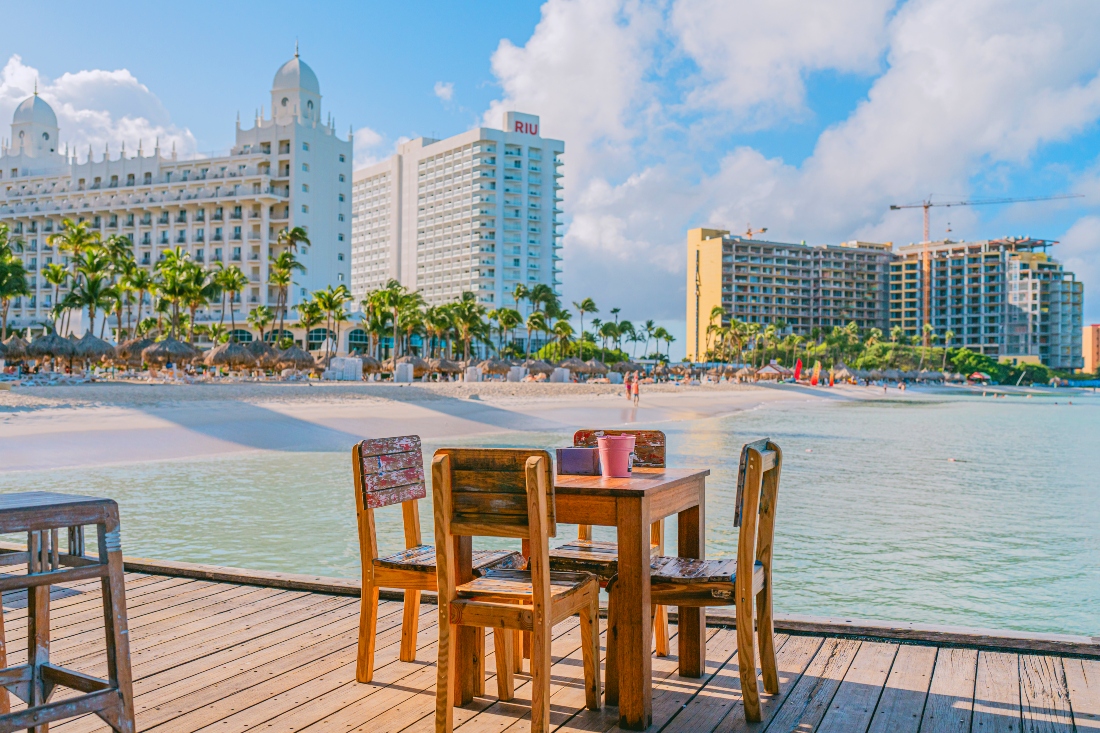
After happy hour, Bugaloe hosts different musical entertainment each day of the week: DJs, country nights, live bands, karaoke. “We tailor our specials to the specific crowds that visit each night,” Michael said. For example, DJ nights draw all the Dutch interns from the hospital, so they put buckets of their favorite beer, Amstel Bright, on special.
But the place doesn’t become a traditional nightclub like other locations on the island. “We want to accommodate families,” he said. “You can come during the day or at night with your kids.” TVs found in many American bars are also absent, a fact I didn’t even notice until Michael pointed it out. He said they also want to avoid becoming a sports bar and drawing that sort of crowd.
The focus is on the water, the laid-back vibe, and the warm family feeling that rises to the surface.
“We try to protect the concept as much as possible,” he said. “That’s why people return. When they’re on that plane to Aruba, dreaming of Bugaloe, they know exactly what to expect.”
